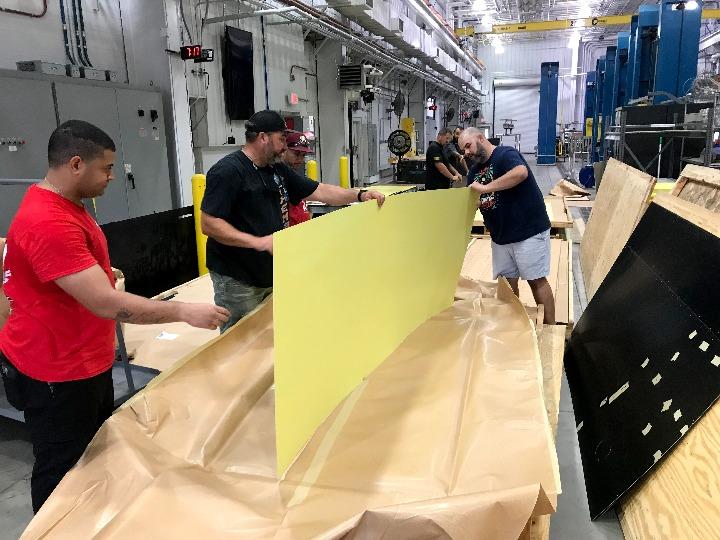At Robins Air Force Base in Georgia, USA, the production flight of the 571st Commodities Maintenance Squadron (CMXS) is helping the U.S. Navy meet its helicopter mission requirements.
At the advanced metal finishing facility (AMFF) of the Warner Robins Air Logistics Complex, crews work diligently for the Navy’s Fleet Readiness Center (FRC) East. According to base officials, the AMFF applies coatings for corrosion prevention, wear protection, etching, cleaning, and chemical milling in preparation for paint and other follow-on manufacturing processes.
According to site officials, the 571st CMXS directly supports the 402nd Commodities Maintenance Group by performing planned and scheduled depot-level maintenance processes in support of the F-15, C-5, C-17, C-130 weapon systems and other aircraft.
Danny Walters, director of the 571st CMXS, says that during production of multiple aluminum skins for the H-53 rotary-wing aircraft platform, it was discovered that a proposed workaround for the insufficiently sized chemical milling tank was not possible.
“The FRC East requested the WR-ALC perform a one-time only chemical milling and anodizing processes required to manufacture the skins,” he says.

Walters says the AMFF is a one-of-a-kind facility, and their tank’s capacity is not readily available in the U.S. Department of Defense (DoD) or commercial sector.
“The AMFF team was tasked to chemically mill and anodize 15 Navy helicopter skins,” Walters says. “The metalizing team adhered to the defined technical execution requirements provided by FRC East and complied with technical and contractual requirements.”
A significant challenge was equipment downtime and skins, which required multiple cuts.
“The AMFF team worked hand-in-hand with 402nd CMXG engineering and the 402nd Mission Support Group to aggressively attack infrastructure failures, reducing downtime from months to weeks,” Walters says. “The AMFF team coordinated with FRC East engineers quickly and effectively to obtain clear guidance when multiple cuts were required… to ensure precise requirements were met.”
According to Walters, the sister service had a requirement that only the AMFF team could meet.
“They executed their mission with technical excellence while maintaining a commitment to conformity, quality and product safety,” he says. “Our ability to enable the Navy to meet their helicopter mission provides an avenue for future workload while meeting the nation’s defense needs.”
Source: Robins Air Force Base, www.robins.af.mil.